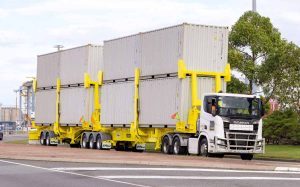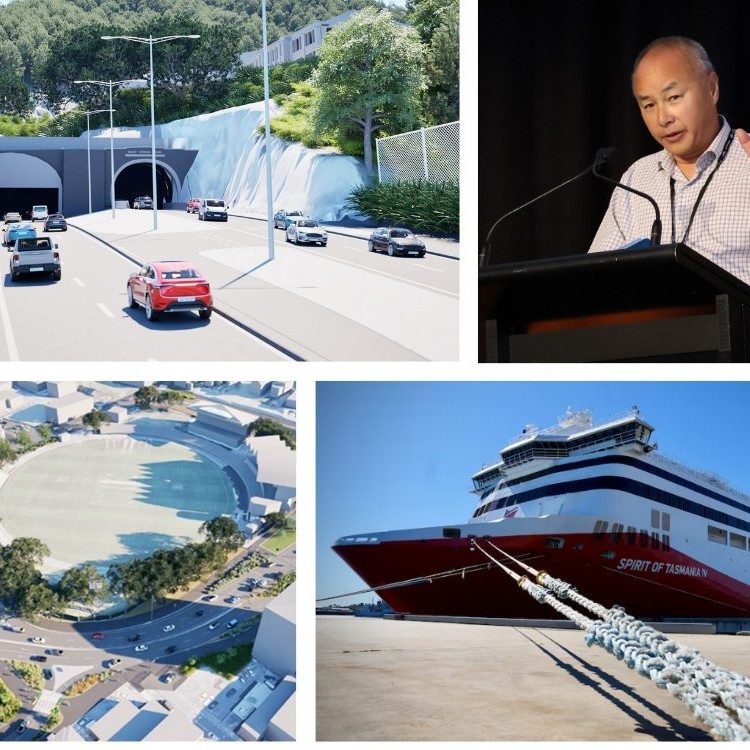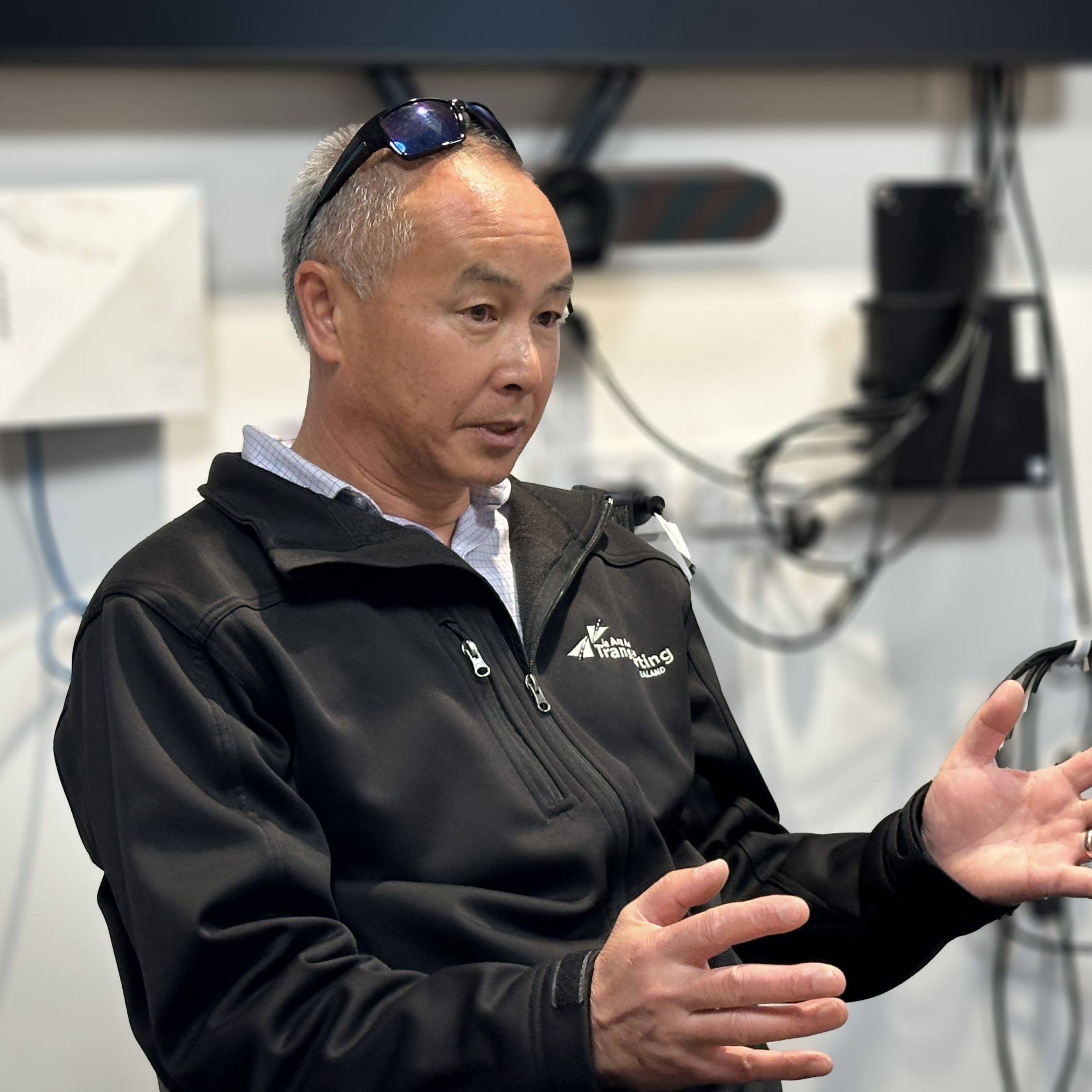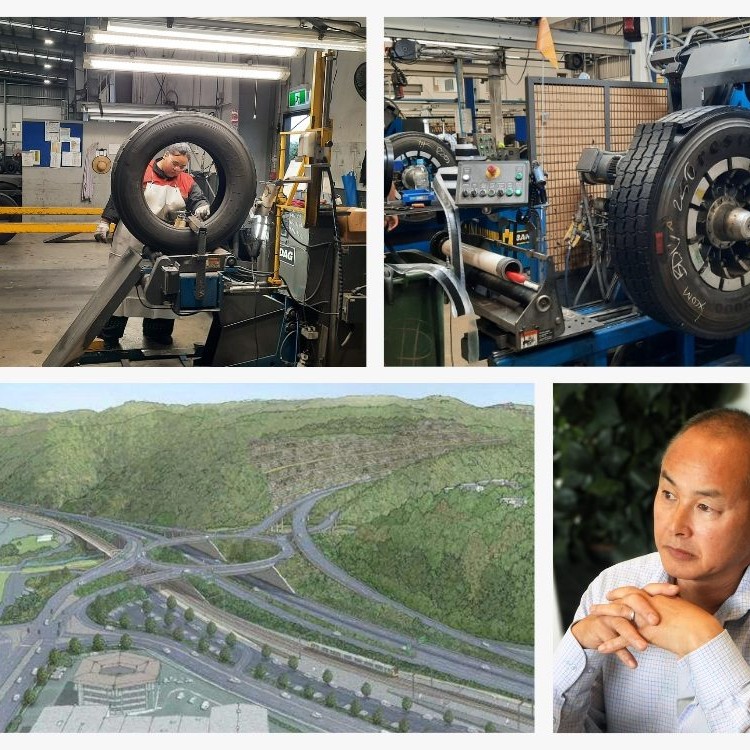
Last week’s highlight for me was the launch of our Green Fleet Self-Assessment Tool with support from TR Group and EECA. The self-assessment tool is an online initiative aimed at reducing road freight emissions.
It outlines how a range of different strategies can help businesses and their customers meet sustainability goals. To ensure good uptake, it’s freely available to anyone on our website.
Several MPs attended, including Labour’s Deborah Russell, National’s Dan Bidois, Greens’ Julie Anne Genter and ACT’s Cameron Luxton, and it was fascinating to hear different views across the political spectrum.
Attendees then had the chance to see, touch and learn about some new truck technology. The team at TR had done such a brilliant job of maintaining and presenting them it was hard to believe these units are all currently operating in the fleet and have been doing so for a considerable time. The variety of power trains included battery electric, hydrogen fuel cell, dual fuel diesel/hydrogen; hybrid (diesel-electric); and conventional diesel.
It dawned on me later that this was the first time I’d seen all those different technologies together. It made me realise how far the fleet has progressed and the incredible amount that has been achieved in a relatively short time. Our industry has a lot to be grateful for. We simply wouldn’t be anywhere near this advanced were it not for the leadership, commitment and investment from the likes of TR Group, HWR and Hiringa.
Given the quantum of change, Andrew Carpenter, Managing Director of TR Group gave some sage advice that I believe has more relevance now than ever before. In essence he said, the new technology is different, so think differently. If you want to use the new tech, then be mindful you’re not replacing like for like. If you appreciate and understand the differences then you’ll find a way to make it work in your fleet.
Proposed transport rule reforms don’t go far enough
On Wednesday NZTA begun consultation on three proposals for changes to Land Transport Rules. This follows Transport Minister Chris Bishop’s announcement in June that he was “Taking the handbrake off productivity through transport rule reform”. Back then he said, “The Government is progressing a bold work programme to increase productivity and efficiency through comprehensively reforming New Zealand’s land transport rules”.
NZTA’s change of most interest to us, is the one that we’ve been in discussions about for a very long time. It’s the opportunities and productivity benefits that can be unlocked by changing the Vehicle Dimension and Mass Rule.
In 2016 the Ministry of Transport reported that higher capacity vehicles can increase productivity by an average of 14-20 per cent. In a similar vein, the International Road Transport Union has estimated that high productivity trucks can reduce emissions by up to 35 per cent per tonne-kilometre compared to standard trucks, by reducing the number of necessary trips. Reducing trips also has safety benefits because crash risk exposure is reduced.
Therefore, we’ve been eagerly awaiting this announcement. The proposed changes will remove the requirement for 50MAX trucks to have an NZTA or Council issued permit – although they will still be required to carry other documentation – and those trucks will no longer need to display a yellow “H” sign. This consultation is a step in the right direction, but when you consider the potential on the table, frankly, this tranche of proposals is pretty underwhelming.
The proposals are predominantly administrative changes and they simply won’t deliver the productivity gains the country needs.
The Government needs to be much more ambitious with these productivity reforms. Enabling higher capacity, more productive trucks on our network will help meet the Government’s goal of doubling the value of exports by 2034, support emissions reduction targets, and improve safety outcomes.
New Zealand is falling behind other countries that are already trialling and progressing changes in this area. We should be taking every opportunity we can to improve freight productivity.

As we heard last week, there are growing differences in thinking across the political parties on investment in roading. Freight volumes are expected to increase by 55 per cent over the next 20 years and there’s only so much network capacity available. Shifting more freight with fewer trips is a necessity to better managing our future.
The sooner we start making the changes necessary to enable improved freight productivity the better. When I looked through NZTA’s proposed changes to the VDAM Rule, Andrew Carpenter’s wise words were ringing in my ears; we need more people to genuinely be up for change, and we need more people to start thinking and acting differently.





